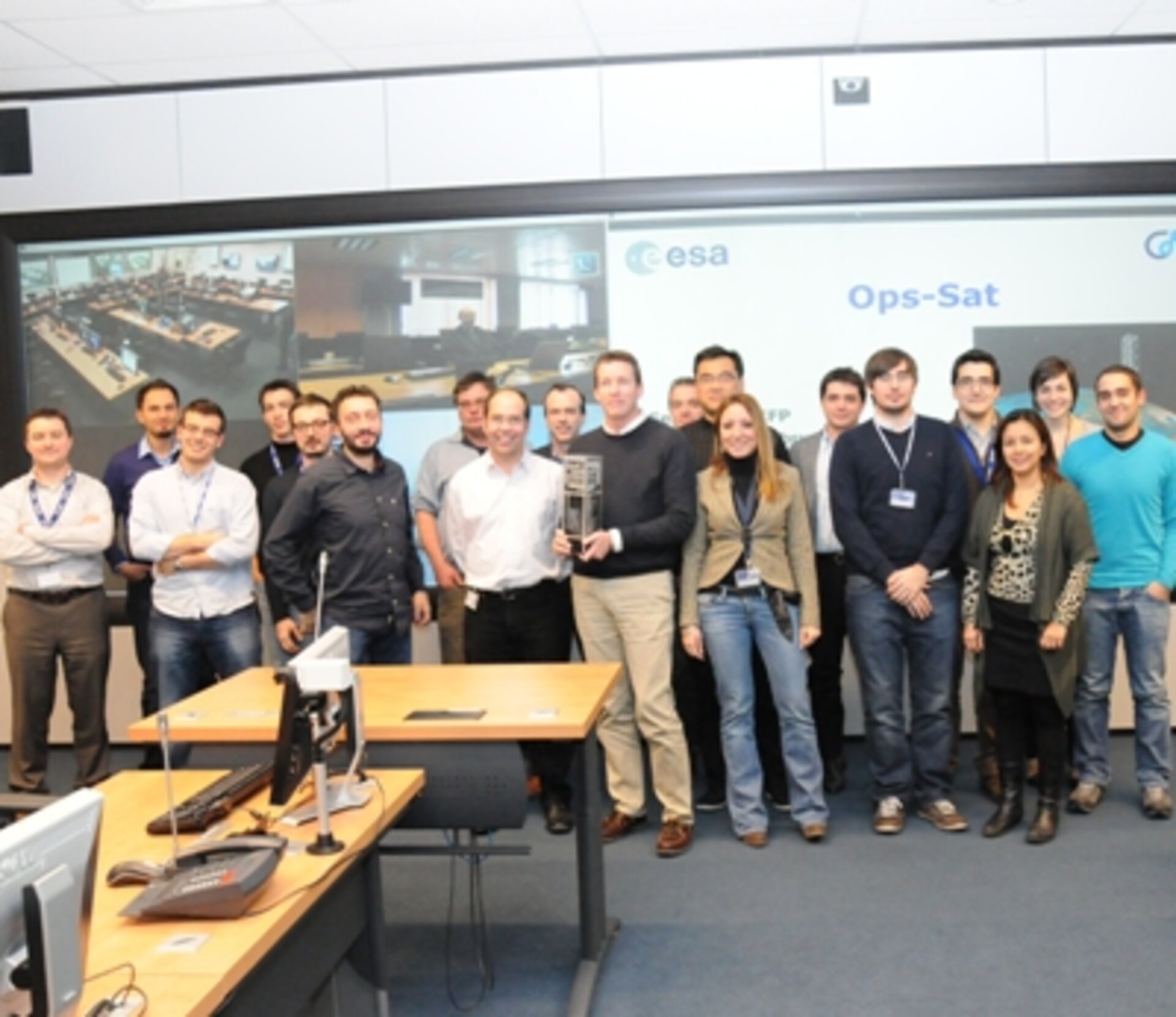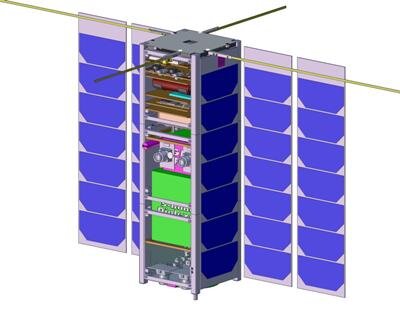Space Mission Operations – Designing for the Future
As the computational power available both on Earth and on spacecrafts is growing, new ways of operating space missions can be implemented. The European Space Operations Centre (ESOC) in Darmstadt (D) is working towards that goal by developing new procedures and innovative software applications, continuously enhancing Europe’s capabilities and efficiency in space operations.
OPS-SAT is a small spacecraft designed by ESA CDF to provide a platform for in-orbit validation of these new concepts developed by ESOC. OPS-SAT will carry a number of experiments that will require a combination of changes to on-board and ground-software and will test methods for handling satellite data and operational processes that may be of use on other ESA missions. The focus of the mission design will be to implement software on off-the-shelf hardware. It will be very flexible, allowing ESOC experimenters to change every aspect of the on-board software in much the same way as one installs and changes operating systems and applications on a home PC. This means experiments that are not even imagined at launch can fly. The main experiments baselined are focused on testing the robustness of the new operation procedures and software applications along with high speed telecommunications. A four kilograms CubeSat form-factor was chosen to allow a fast and cost effective development cycle, equipped primarily with commercial off-the-shelf components.

The design activity was conducted inside ESA’s Concurrent Design Facility (CDF), usually used for ESA’s missions typically 500 times heavier. Although this spacecraft is small in size, the complexity remains incredibly high. OPS-SAT is the first CubeSat designed by ESA, integrating state of the art components (such as a miniaturised X-band transmitter from the PROBA missions) allowing it to provide unmatched performances, up to several hundreds times better than any other CubeSat flown before. The CDF and the supporting concurrent engineering environment were able to adapt successfully to this new type of application, providing tools and methodologies to enhance performances and reliability through architectural trade-offs. Fast iterations of the design process, helped by an updated concurrent engineering data model and rapid prototyping techniques allowed ESA to achieve a mission design that meets all the requirements.















 Germany
Germany
 Austria
Austria
 Belgium
Belgium
 Denmark
Denmark
 Spain
Spain
 Estonia
Estonia
 Finland
Finland
 France
France
 Greece
Greece
 Hungary
Hungary
 Ireland
Ireland
 Italy
Italy
 Luxembourg
Luxembourg
 Norway
Norway
 The Netherlands
The Netherlands
 Poland
Poland
 Portugal
Portugal
 Czechia
Czechia
 Romania
Romania
 United Kingdom
United Kingdom
 Slovenia
Slovenia
 Sweden
Sweden
 Switzerland
Switzerland


























